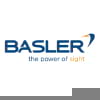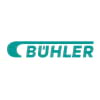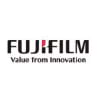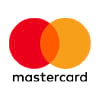Global Champagne Market, By Product (Prestige Cuvée, Blanc De Noirs, Blanc De Blancs, Rosé Champagne, Others), Distribution Channel (Supermarkets/Hypermarkets, Specialty Stores, Online Stores), Grade Type (Pinot Meunier, Pinot Noir, Chardonnay), Flavour (Fruity, Brut), Price Point (Economy, Mid-range, Luxury), Sales Channel(Offline Sales Channel, Online Sales Channel) – Industry Trends and Forecast to 2031.
Champagne Market Analysis and Size
The evolving consumption trends in Europe and North America, marked by an increase in food service establishments and casual drinking occasions, have significantly impacted the champagne market. Traditionally reserved for special events such as weddings and achievements, Champagne is now being embraced for more casual gatherings such as birthdays, office parties, and dinners. Moreover, the growing popularity of vintage wines and champagnes reflects consumer preferences for authentic flavors and experiences, contributing to increased demand. As premiumization continues to drive the alcoholic beverage market, particularly in spirits and wine, Champagne stands to benefit from its association with luxury and sophistication, further fueling its growth trajectory over the medium term.
Global champagne market size was valued at USD 7.3 billion in 2023 and is projected to reach USD 11.90 billion by 2031, with a CAGR of 6.3% during the forecast period of 2024 to 2031. In addition to the insights on market scenarios such as market value, growth rate, segmentation, geographical coverage, and major players, the market reports curated by the Data Bridge Market Research also include in-depth expert analysis, geographically represented company-wise production and capacity, network layouts of distributors and partners, detailed and updated price trend analysis and deficit analysis of supply chain and demand.
Report Scope and Market Segmentation
|
Report Metric |
Details |
|
Forecast Period |
2024-2031 |
|
Base Year |
2023 |
|
Historic Years |
2022 (Customizable to 2016-2021) |
|
Quantitative Units |
Revenue in USD Billion, Volumes in Units, Pricing in USD |
|
Segments Covered |
Product (Prestige Cuvée, Blanc De Noirs, Blanc De Blancs, Rosé Champagne, Others), Distribution Channel (Supermarkets/Hypermarkets, Specialty Stores, Online Stores), Grade Type (Pinot Meunier, Pinot Noir, Chardonnay), Flavour (Fruity, Brut), Price Point (Economy, Mid-range, Luxury), Sales Channel (Offline Sales Channel, Online Sales Channel) |
|
Countries Covered |
U.S., Canada, Mexico, Germany, Sweden, Poland, Denmark, Italy, U.K., France, Spain, Netherlands, Belgium, Switzerland, Turkey, Russia, Rest of Europe, Japan, China, India, South Korea, New Zealand, Vietnam, Australia, Singapore, Malaysia, Thailand, Indonesia, Philippines, Rest of Asia-Pacific, Brazil, Argentina, Rest of South America, UAE, Saudi Arabia, Oman, Qatar, Kuwait, South Africa, Rest of Middle East and Africa |
|
Market Players Covered |
LANSON-BCC (France), Champagne GH Martel & Co (France), Taittinger (France), Moet Hennessy USA, Inc (U.S.), Vranken - Pommery Monopole (France), Pernod Ricard (France), Louis Roederer (France), Veuve Clicquot (France), Pommery (France), Piper-Heidsieck (France), Andre Champagne Cellars (U.S.), Alumiceal (U.S.), Centre Vinicole – Champagne Nicolas Feuillatte (France), G.H. Mumm et Cie (France), Bollinger (France), Artwinery (Ukraine) |
|
Market Opportunities |
|
Market Definition
Champagne is a sparkling wine exclusively produced in the champagne region of France, using specific grape varieties, primarily Chardonnay, Pinot Noir, and Pinot Meunier. It is known for its effervescence, complex flavor profile, and association with celebrations and luxury, owing to its unique production method involving secondary fermentation in the bottle.
Champagne Market Dynamics
Drivers
- Changing Consumers’ Perceptions due to Growing Innovative Champagne Marketing
Champagne houses employ creative storytelling, captivating visuals, and experiential marketing to distinguish their products amidst fierce competition. Collaborations with influencers, celebrities, and artists generate excitement and broaden brand appeal across diverse demographics. Additionally, interactive digital campaigns and immersive experiences leverage technology to engage consumers and foster brand loyalty. Through continuous reinvention and meaningful consumer engagement, champagne producers establish emotional connections, sustaining interest and drives growth of the Champagne sales.
In April 2021, Ruinart Champagne's launch of the Eco-Friendly Second Skin Packaging exemplifies innovative branding in the champagne market. The fully recyclable 100% paper case maintains the wine's integrity and aligns with evolving consumer preferences for sustainability and eco-conscious products. This initiative demonstrates Ruinart's commitment to environmental responsibility while enhancing its brand image and appealing to conscientious consumers.
- Rising Popularity of Champagne Cocktails Increases the Consumption Champagne
Champagne cocktails offer consumers versatile and innovative ways to enjoy champagne beyond traditional celebrations, appealing to a broader demographic. Mixologists and bartenders continue to experiment with champagne as a key ingredient in a variety of cocktails, creating new flavors and experiences that attract younger consumers and cocktail enthusiasts. This trend increases champagne consumption and drives demand for different champagne styles, from dry brut to sweeter varieties, catering to diverse tastes. As a result, champagne producers benefit from expanded market opportunities and heightened consumer interest driven by the flourishing cocktail culture.
Opportunities
- Increased Tourism Leads to the Growing Demand for Champagne
As tourists seek memorable experiences, champagne becomes synonymous with luxury, celebration, and indulgence, leading to higher demand. Hospitality establishments often feature champagne prominently on their menus, offering it for special occasions or as a staple beverage, thus driving sales volume. Additionally, the association of champagne with luxury and hospitality enhances its perceived value, attracting both domestic and international consumers. Furthermore, tourism hubs serve as key markets for champagne producers, allowing them to display their products to a diverse audience and establish brand recognition, contributing to sustained growth in the market.
- Growing Popularity of Western-Style due to the Expansion of New Markets
Rising affluence and changing consumer preferences in these economies have led to an increased demand for luxury goods, including champagne, as a symbol of celebration and status. Champagne manufacturers are actively targeting these markets, leveraging their brand prestige and heritage to capture the attention of affluent consumers. Moreover, evolving lifestyles and social trends in these regions, such as the growing popularity of western-style celebrations and luxury experiences, further fuel the demand for champagne. As a result, the expansion into new markets presents lucrative opportunities for champagne producers to diversify their customer base and drive sales growth in the global market.
Restraints/Challenges
- High Production Costs Challenges for Smaller Producers
The labor-intensive nature of champagne production, which often involves manual processes such as hand-harvesting grapes and extended aging periods in cellars, contributes to elevated expenses. Additionally, the geographical limitations imposed by the champagne region's designation mean that land and resources are limited and costly. These high costs can constrain profit margins, making it challenging for smaller producers to compete effectively and potentially leading to higher retail prices for consumers.
- Regulatory Hurdles Constrain Champagne Adoption due its Impact of Increased Complexity
Compliance with quality standards adds complexity and costs to producers. Navigating international trade regulations and certifications presents barriers for market entry and expansion. Changes in regulatory frameworks, such as tariffs or labeling requirements, can disrupt supply chains and impact export markets. Overall, regulatory constraints create administrative burdens and limit flexibility for champagne producers, constraining growth opportunities and innovation within the industry.
This market report provides details of new recent developments, trade regulations, import-export analysis, production analysis, value chain optimization, market share, impact of domestic and localized market players, analyses opportunities in terms of emerging revenue pockets, changes in market regulations, strategic market growth analysis, market size, category market growths, application niches and dominance, product approvals, product launches, geographic expansions, technological innovations in the market. To gain more info on the market contact Data Bridge Market Research for an Analyst Brief, our team will help you take an informed market decision to achieve market growth.
Impact and Current Market Scenario of Raw Material Shortage and Shipping Delays
Data Bridge Market Research offers a high-level analysis of the market and delivers information by keeping in account the impact and current market environment of raw material shortage and shipping delays. This translates into assessing strategic possibilities, creating effective action plans, and assisting businesses in making important decisions.
Apart from the standard report, we also offer in-depth analysis of the procurement level from forecasted shipping delays, distributor mapping by region, commodity analysis, production analysis, price mapping trends, sourcing, category performance analysis, supply chain risk management solutions, advanced benchmarking, and other services for procurement and strategic support.
Expected Impact of Economic Slowdown on the Pricing and Availability of Products
When economic activity slows, industries begin to suffer. The forecasted effects of the economic downturn on the pricing and accessibility of the products are taken into account in the market insight reports and intelligence services provided by DBMR. With this, our clients can typically keep one step ahead of their competitors, project their sales and revenue, and estimate their profit and loss expenditures.
Recent Developments
- In October 2022, Societe Jacques Bollinger SA commemorated 40 years of collaboration with 007 by launching a limited edition champagne, "Special Cuvee, The Bollinger Style." The champagne, packaged in a distinctive gift box featuring James Bond's silhouette and his iconic Aston Martin DB5, pays homage to the longstanding collaboration and the sophistication associated with both the brand and the fictional character
- In April 2022, Champagne Krug, a prominent LVMH brand, launched two new editions of champagnes under its "Grande Cuvées" line, comprising white and rosé variations. These champagnes were meticulously crafted from the grapes harvested in 2014, a year characterized by unpredictable weather conditions, which Krug aptly describes as an "Erratic year," displaying the brand's commitment to quality and innovation
- In February 2022, Champagne Louis Roederer launched its 2014 vintage edition of the renowned "Cristal" champagne, featuring a dosage of 7 grams per liter. Priced at approximately USD 331.98 per 75 cl bottle in the U.K. market, this exquisite champagne exemplifies the brand's dedication to producing premium quality sparkling wines, sought after by connoisseurs worldwide for their exceptional taste and luxury experience
Champagne Market Scope
The market is segmented on the basis of product, distribution channel, grade type, flavour, price point, and sales channel. The growth among segments helps you analyse niche pockets of growth and strategies to approach the market and determine your core application areas and the difference in your target markets.
Product
- Prestige Cuvée
- Blanc De Noirs
- Blanc De Blancs
- Rosé Champagne
- Others
Distribution Channel
- Supermarkets/Hypermarkets
- Specialty Stores
- Online Stores
Grade Type
- Pinot Meunier
- Pinot Noir
- Chardonnay
Flavour
- Fruity
- Apple
- Pear
- Citrus
- Strawberry
- Nutty
- Cream
- Vanilla
- Brut
Price Point
- Economy
- Mid-range
- Luxury
Sales Channel
- Offline Sales Channel
- Supermarkets/Hypermarkets
- Departmental Stores
- Convenience Store
- Other Sales Channel
- Online Sales Channel
- Company Website
- E-commerce Platform
Champagne Market Regional Analysis/Insights
The market is analyses and market size, volume information is provided by product, distribution channel, grade type, flavor, price point and sales channel as referenced above.
The countries covered in the market report are U.S., Canada, Mexico in North America, Germany, Sweden, Poland, Denmark, Italy, U.K., France, Spain, Netherlands, Belgium, Switzerland, Turkey, Russia, Rest of Europe in Europe, Japan, China, India, South Korea, New Zealand, Vietnam, Australia, Singapore, Malaysia, Thailand, Indonesia, Philippines, Rest of Asia-Pacific (APAC) in Asia-Pacific (APAC), Brazil, Argentina, Rest of South America as a part of South America, UAE, Saudi Arabia, Oman, Qatar, Kuwait, South Africa, Rest of Middle East and Africa(MEA) as a part of Middle East and Africa(MEA).
North America dominates in the market stems from its cultural significance, particularly in ceremonies and celebrations where alcohol plays a traditional role. This entrenched cultural association drives consistent demand, ensuring the region's continued prominence in the market. Additionally, North America's affluent consumer base and penchant for luxury products further bolster its dominance in champagne consumption. As such, this trend is expected to persist and even flourish in the forecast period, cementing North America's position as a key player in the global champagne market.
The Asia-Pacific is experiencing a growth in the market due to rise in support for wineries, driven by a growing appreciation for wine culture and consumption. This trend is further fueled by rising disposable incomes among consumers in the region, enabling them to indulge in premium wine products. As a result, the wine industry in Asia-Pacific is poised for lucrative growth, with increasing demand for diverse wine varieties and experiences, presenting significant opportunities for wineries and related businesses to thrive in the market.
The country section of the report also provides individual market impacting factors and changes in regulations in the market domestically that impacts the current and future trends of the market. Data points such as down-stream and upstream value chain analysis, technical trends and porter's five forces analysis, case studies are some of the pointers used to forecast the market scenario for individual countries. Also, the presence and availability of global brands and their challenges faced due to large or scarce competition from local and domestic brands, impact of domestic tariffs and trade routes are considered while providing forecast analysis of the country data.
Competitive Landscape and Champagne Market Share Analysis
The market competitive landscape provides details by competitor. Details included are company overview, company financials, revenue generated, market potential, investment in research and development, new market initiatives, global presence, production sites and facilities, production capacities, company strengths and weaknesses, product launch, product width and breadth, application dominance. The above data points provided are only related to the companies’ focus related to market.
Some of the major players operating in the market are
- LANSON-BCC (France)
- Champagne GH Martel (France)
- Taittinger (France)
- Moet Hennessy USA, Inc (U.S.)
- Vranken - Pommery Monopole (France)
- Pernod Ricard (France)
- Louis Roederer (France)
- Veuve Clicquot (France)
- Pommery (France)
- Piper-Heidsieck (France)
- Andre Champagne Cellars (U.S.)
- Alumiceal (U.S.)
- Centre Vinicole – Champagne Nicolas Feuillatte (France)
- G.H. Mumm et Cie (France)
- Bollinger (France)
- Artwinery (Ukraine)
SKU-





 Forecast Period
Forecast Period  Market Size (Base Year)
Market Size (Base Year)  Market Size (Forecast Year)
Market Size (Forecast Year) CAGR
CAGR










